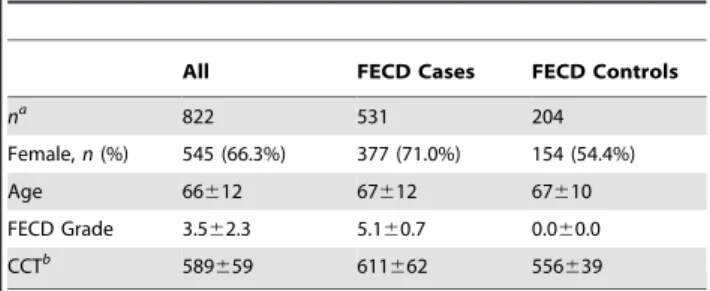Differing roles for TCF4 and COL8A2 in central corneal thickness and fuchs endothelial corneal dystrophy.
Texto
Imagem



Documentos relacionados
Purpose : To investigate the distribution of axial length, anterior chamber depth, lens thickness, vitreous chamber depth, and central corneal thickness in children at different
Purpose: To evaluate central corneal thickness (CCT ) and peripheral corneal thick- ness (PCT ) in patients with rheumatoid arthritis (RA) and to assess the relationships among
Purpose: To evaluate the central corneal thickness (CCT), corneal volume (CV), and anterior and posterior corneal surfaces using the Scheimpflug imaging system in patients
Comparison of central corneal thickness measurements by Pentacam, noncontact specular microscope, and ultrasound pachymetry in normal and post-LASIK eyes.. Corneal thickness
The effects of delivery type and gender on intraocular pressure and central corneal thickness in newborns.. 9 4 Arq
Correlation of intraocular pressure with central corneal thickness in premature and full-term newborns.. Pressure diferential of intraocular pressure measured between supine
Correlations between corneal backscatter for the central 3 mm and central corneal thickness in the control subjects (squares and solid line; r=0.400; p>0.05), the patients
Purpose: Studies have suggested that corneal biomechanical properties inluence intraocular pressure (IOP) measurements, namely central corneal thickness (CCT ) and corneal